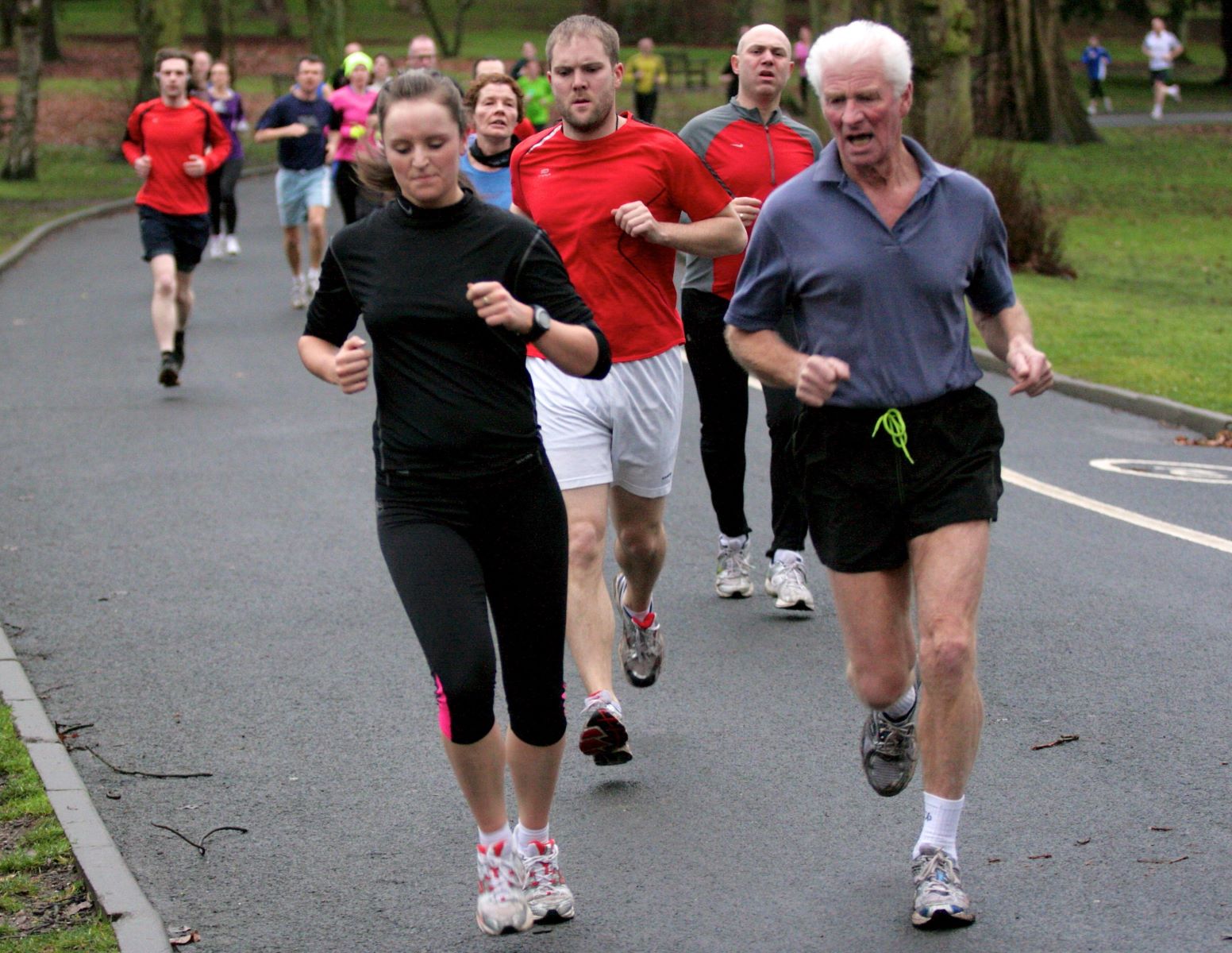Home>Training & Techniques>The Benefits Of Diaphragm Training For Improved Running Performance


Training & Techniques
The Benefits Of Diaphragm Training For Improved Running Performance
Published: March 4, 2024
Improve your running performance with diaphragm training techniques. Learn the benefits of proper training for enhanced endurance and efficiency. Discover how to optimize your running with effective diaphragm techniques.
(Many of the links in this article redirect to a specific reviewed product. Your purchase of these products through affiliate links helps to generate commission for Therunningadvisor.com, at no extra cost. Learn more)
Table of Contents
Introduction
The diaphragm, a dome-shaped muscle located at the base of the lungs, plays a crucial role in the process of breathing. When it comes to running, the diaphragm's function becomes even more significant, as it directly impacts an athlete's performance and endurance. Understanding the importance of diaphragm training for runners is essential for optimizing running performance and overall well-being.
In the following sections, we will delve into the intricacies of the diaphragm and its role in running, explore the myriad benefits of diaphragm training for runners, discuss effective techniques for diaphragm training, and provide insights on seamlessly incorporating diaphragm training into your running routine. By the end of this article, you will have a comprehensive understanding of how diaphragm training can elevate your running performance to new heights.
Understanding the Diaphragm and its Role in Running
The diaphragm, a primary muscle involved in the breathing process, plays a pivotal role in running performance. As runners engage in physical activity, the demand for oxygen increases, placing greater emphasis on the diaphragm's function. This dome-shaped muscle separates the chest cavity from the abdominal cavity and serves as the primary muscle of respiration. When you inhale, the diaphragm contracts and moves downward, creating space for the lungs to expand and fill with air. Conversely, during exhalation, the diaphragm relaxes and moves upward, aiding in the expulsion of air from the lungs.
In the context of running, the diaphragm's efficiency directly impacts an athlete's endurance, stamina, and overall performance. A strong and well-conditioned diaphragm enables runners to maintain a consistent breathing pattern, effectively manage oxygen intake, and optimize the delivery of oxygen to working muscles. Furthermore, a robust diaphragm contributes to enhanced respiratory efficiency, allowing runners to sustain prolonged periods of physical exertion with reduced fatigue.
It is important for runners to recognize the interconnectedness of the diaphragm with other muscles involved in the breathing process, such as the intercostal muscles and the muscles of the abdomen. These muscles work in tandem to facilitate efficient breathing, ensuring that the body receives an adequate oxygen supply during running activities. By understanding the intricate role of the diaphragm in the context of running, athletes can appreciate the significance of incorporating diaphragm training into their overall fitness regimen.
In the subsequent sections, we will delve into the numerous benefits of diaphragm training for runners, explore effective techniques for strengthening the diaphragm, and provide practical insights on seamlessly integrating diaphragm training into a running routine. This comprehensive approach will empower runners to harness the full potential of their diaphragm, thereby enhancing their running performance and overall well-being.
Benefits of Diaphragm Training for Runners
Diaphragm training offers a myriad of benefits for runners, encompassing both physiological and performance-related advantages. By incorporating targeted diaphragm training into their fitness regimen, runners can experience notable improvements in their overall running performance and endurance. Here are the key benefits of diaphragm training for runners:
-
Enhanced Respiratory Efficiency: Diaphragm training focuses on strengthening and conditioning this vital muscle, leading to improved respiratory efficiency. A robust diaphragm enables runners to optimize their breathing patterns, facilitating the effective exchange of oxygen and carbon dioxide during physical exertion. This enhanced respiratory efficiency plays a pivotal role in sustaining endurance and minimizing the onset of fatigue during running activities.
-
Improved Oxygen Utilization: Through diaphragm training, runners can enhance their body's ability to utilize oxygen more effectively. A strong and well-conditioned diaphragm contributes to efficient oxygen intake, ensuring that working muscles receive an adequate oxygen supply during intense running sessions. This optimization of oxygen utilization translates to enhanced stamina and prolonged endurance, allowing runners to push their limits and achieve peak performance.
-
Reduced Breathing Fatigue: Engaging in diaphragm training equips runners with the ability to manage breathing fatigue more effectively. As the diaphragm becomes stronger and more resilient, runners experience reduced strain on their respiratory muscles, particularly during prolonged or high-intensity running. This reduction in breathing fatigue enables runners to maintain a steady and controlled breathing rhythm, enhancing their overall running experience.
-
Enhanced Core Stability: The diaphragm is intricately connected to the core musculature, and diaphragm training contributes to improved core stability. A strong and engaged diaphragm provides foundational support for the core, promoting better posture, balance, and overall stability during running. This enhanced core stability not only aids in injury prevention but also enhances running efficiency and form.
-
Optimized Endurance: By honing the strength and endurance of the diaphragm, runners can significantly improve their overall endurance capacity. A well-conditioned diaphragm enables athletes to sustain prolonged periods of physical exertion with greater ease, allowing for extended running durations and heightened performance levels. This optimized endurance empowers runners to conquer longer distances and challenging terrains with confidence.
Incorporating diaphragm training into a comprehensive running regimen can yield substantial benefits, empowering runners to elevate their performance, endurance, and overall well-being. By recognizing the transformative impact of diaphragm training, athletes can harness the full potential of this crucial muscle, unlocking new levels of running prowess and resilience.
Techniques for Diaphragm Training
Effective diaphragm training involves a range of techniques designed to strengthen and optimize the function of this vital muscle. By incorporating targeted exercises and mindful practices, runners can enhance their respiratory capacity, improve oxygen utilization, and bolster their overall running performance. Here are several techniques for diaphragm training that can be seamlessly integrated into a runner's fitness regimen:
-
Diaphragmatic Breathing: Also known as belly breathing, diaphragmatic breathing focuses on engaging the diaphragm to facilitate deep and efficient breathing. To practice diaphragmatic breathing, runners can lie down or sit in a comfortable position, placing one hand on the abdomen and the other on the chest. As they inhale deeply through the nose, they should focus on expanding the abdomen while keeping the chest relatively still. This intentional engagement of the diaphragm promotes optimal air intake and enhances respiratory efficiency.
-
Pursed Lip Breathing: Pursed lip breathing is a technique that aids in prolonging exhalation, thereby reducing the work of breathing and enhancing overall respiratory control. Runners can practice pursed lip breathing by inhaling slowly through the nose and exhaling gently through pursed lips, as if blowing out a candle. This technique helps maintain open airways, prevents air trapping, and promotes a more relaxed breathing pattern during running.
-
Breath Holding Exercises: Incorporating breath holding exercises into a training routine can effectively challenge and strengthen the diaphragm. Runners can engage in controlled breath holds during specific intervals of their runs, gradually increasing the duration over time. This practice encourages the diaphragm to adapt to varying oxygen demands, ultimately enhancing its endurance and resilience.
-
Yoga and Pilates: Participating in yoga and Pilates classes can provide valuable opportunities for diaphragm-focused training. These disciplines emphasize mindful breathing techniques and incorporate movements that engage and strengthen the diaphragm. Poses such as the diaphragmatic breath, cat-cow stretch, and deep belly breathing in yoga, as well as specific Pilates exercises targeting the core and breath control, can effectively enhance diaphragm function and respiratory capacity.
-
Resistance Breathing: Utilizing resistance breathing devices, such as inspiratory muscle trainers, can offer targeted resistance training for the diaphragm and respiratory muscles. These devices provide adjustable levels of resistance, challenging the diaphragm to work against increased pressure during inhalation. By incorporating regular sessions with resistance breathing devices, runners can effectively strengthen their diaphragm and improve overall breathing efficiency.
By incorporating these techniques into their training regimen, runners can effectively strengthen and optimize their diaphragm function, leading to enhanced respiratory capacity, improved oxygen utilization, and heightened running performance. These techniques not only contribute to physical improvements but also foster a deeper mind-body connection, empowering runners to achieve their full potential on the track, trail, or road.
Incorporating Diaphragm Training into Your Running Routine
Integrating diaphragm training into your running routine is a strategic approach that can yield significant enhancements in respiratory capacity, endurance, and overall running performance. By seamlessly infusing diaphragm-focused exercises and mindful breathing techniques into your regular training regimen, you can harness the transformative power of diaphragm training to elevate your running prowess. Here's how you can effectively incorporate diaphragm training into your running routine:
Mindful Warm-Up and Cool-Down Practices
Prior to embarking on your running sessions, allocate time for mindful warm-up practices that specifically target the diaphragm and respiratory muscles. Engage in diaphragmatic breathing exercises, gentle stretches, and focused breathwork to prepare your respiratory system for the demands of running. Similarly, incorporating diaphragm-focused cool-down practices post-run can aid in relaxation, recovery, and the gradual transition to a resting state.
Interval Training with Diaphragm Focus
Integrate diaphragm-focused interval training into your running routine to specifically challenge and strengthen the diaphragm. During designated intervals, consciously engage in diaphragmatic breathing, breath control exercises, or breath holds to enhance diaphragm endurance and respiratory efficiency. By incorporating these intervals strategically, you can progressively enhance your diaphragm's capacity to sustain optimal breathing patterns during varying intensities of running.
Incorporation of Diaphragm-Enhancing Exercises
Incorporate targeted diaphragm-enhancing exercises, such as yoga poses, Pilates movements, and resistance breathing techniques, into your cross-training activities. Participating in yoga and Pilates classes or utilizing resistance breathing devices can provide valuable opportunities to focus on diaphragm strength and respiratory control, complementing your running routine with holistic diaphragm training.
Mind-Body Integration during Running
During your runs, maintain a heightened awareness of your breathing patterns and diaphragm engagement. Practice diaphragmatic breathing, rhythmic breath control, and mindful inhalation and exhalation to optimize your respiratory efficiency while running. By consciously integrating diaphragm-focused breathing techniques into your running experience, you can enhance your overall running performance and endurance.
By seamlessly integrating these diaphragm training strategies into your running routine, you can unlock the full potential of your respiratory system, optimize oxygen utilization, and elevate your running performance to new heights. Embracing a holistic approach to diaphragm training not only enhances physical capabilities but also fosters a deeper mind-body connection, empowering you to achieve peak performance and endurance in your running endeavors.
Conclusion
In conclusion, the diaphragm stands as a pivotal muscle in the realm of running, playing a fundamental role in respiratory efficiency, oxygen utilization, and overall performance. By understanding the intricate connection between diaphragm function and running prowess, athletes can unlock a wealth of benefits through targeted diaphragm training.
Through the deliberate practice of diaphragmatic breathing, pursed lip breathing, breath holding exercises, and the incorporation of yoga, Pilates, and resistance breathing techniques, runners can strengthen and optimize their diaphragm, leading to enhanced respiratory capacity, improved oxygen utilization, and heightened endurance. These techniques not only contribute to physical improvements but also foster a deeper mind-body connection, empowering runners to achieve their full potential on the track, trail, or road.
By seamlessly integrating diaphragm training into their running routines, athletes can elevate their performance, endurance, and overall well-being. The enhanced respiratory efficiency, reduced breathing fatigue, improved core stability, and optimized endurance resulting from diaphragm training enable runners to conquer longer distances, sustain challenging terrains, and push their limits with confidence.
It is essential for runners to recognize the transformative impact of diaphragm training, as it empowers them to harness the full potential of this crucial muscle, unlocking new levels of running prowess and resilience. By embracing a holistic approach to diaphragm training, athletes can optimize their respiratory system, elevate their running performance, and cultivate a deeper connection between their physical and mental well-being.
In essence, the incorporation of diaphragm training into a comprehensive running regimen offers a pathway to enhanced respiratory capacity, improved endurance, and elevated performance. By embracing the principles of diaphragm training and integrating targeted techniques into their running routines, athletes can embark on a journey toward realizing their full potential as runners, equipped with the strength, resilience, and endurance to conquer new challenges and achieve peak performance.














